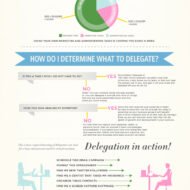Posted by Managementguru in Business Management, Human Resource, Principles of Management, Training & Development
on Feb 26th, 2014 | 0 comments

Following are some of the intrinsic motivational techniques employed by the organisations to boost the morale of the employees and thus the productivity. Intrinsic motivation 1. Job Design Arranging work elements to form tasks and a combination of such tasks to form a job is called as job design. Here the focus is on the job. 2. Job Redesign Here the work elements are rearranged into meaningful tasks and combining such tasks to form work modules is the principle behind job redesigning. Each work module is assigned to the respective worker who is capable of performing it efficiently and number of such modules can be combined to form a whole job which is assigned to a group to improve their intrinsic motivation. Here the focus is on the individual workers. 3. Work Modules Work module can be defined as one that is being completed approximately in two hours time. In an eight hours shift there will be four such work modules. Employees are motivated not merely by pay and perks; there should be something more to the job , more challenging and meaningful. The following are some of the methods of job redesign that provide the expected challenge and meaning. Types of Job Redesigning A. Job Rotation Monotonous work makes an employee dull and in order to motivate the employees, the management can think of what is called Job Rotation. To rotate the person or persons from job to job, from time to time. The job to which he is rotated should match his attributes, level of hierarchical position in the organization and compatible with his competence and experience. BENEFITS OF JOB ROTATION: Reduces boredomIncreases motivationIncreases Employment flexibilityAdds experience to a worker’s careerIncreases training motivation LIMITATIONS OF JOB ROTATION Lot of time is consumed as workers need to be trained to suit the new jobAs well increases training costIf the worker does not fit in the new job, he has to continue his routine work which can create a sense of inferiority and loss of moraleReduced productivity during transition periodDemotivates ambitious employees who seek steady employmentIt is generally believed that job rotation reduces turnover of employees in an organization. B. Job Enlargement When a job is expanded horizontally, job enlargement occurs. For example, when an accountant is entrusted with additional responsibilities of following up of orders, dispatch and payments, his job is said to be enlarged. He has to take up variety of tasks and job activities other than book keeping. BENEFITS OF JOB ENLARGEMENT Increases one’s area of responsibilityAids in growth and versatilityFlexibility in deployment LIMITATIONS OF JOB ENLARGEMENT The criticism is, whether there is improvement in the quality of work is a question mark; the workers line of thinking may be like this” Instead of one lousy job, now I have many”!Does not add challenging or meaningful work. C. Job Enrichment When the job expands vertically, it is called job enrichment. If a person is made to involve in quality work, in other words management functions like planning, co-ordinating, controlling and decision-making, it is said to enrich him in terms of experience and expertise. Guidelines for Job Enrichment: Combine tasks When certain tasks are combined to form work modules, it increases skill variety and task identity. ERP or ENTERPRISE RESOURCE PLANNING is a job entity that combines production, marketing, finance, human resource and logistics departments in one go. The software connects all the departments in such a fashion that when an order is placed by a customer, the stock existence, current price of the product, credibility of the customer, delivery schedule are available for the executives of the concerned department in their systems simultaneously so that decisions could be quickly made. Time is saved as the order need not be passed on from department to department thanks to the availability of common information to all the departments at...

Posted by Managementguru in Business Management, Organisational behaviour
on Feb 25th, 2014 | 0 comments

Before embarking on the subject let us find out what delegation is and how the process occurs in an organization. What is Delegation: A manager or a superior cannot think of doing all the jobs by himself. It becomes therefore necessary to delegate some of the jobs to his subordinates to ease the pressure and assign the required authority to carry on with those tasks. This downward pushing of authority is called delegation of authority. Art of Delegation Delegation takes place when one person gives another person the right to perform work on his behalf and in his name. It is the process of entrusting part of the work by the superior to his subordinates. How to Master the Art of Delegation? PROCESS OF DELEGATION 1. Step one is Assigning Responsibility: The superior directs the subordinate to perform a task with due assistance and training. 2. Step two is Granting Authority: To accomplish the task some authority has to be given to the subordinate to procure the essential resources from the organization like materials, equipment, labor etc., 3. Step three is Creating Accountability: The subordinate is expected to accomplish the task within the stipulated time period and report to the manager regarding the acquisition, use and replacement of resources. ADVANTAGES OF DELEGATION It reduces the work pressure of the manager Leads to better decisions Speeds up decision making It improves the morale of the employees Creates a feeling of mutual trust between the superior and subordinates Helps to create a formal organization structure BARRIERS TO EFFECTIVE DELEGATION Fear of being exposed: Some superiors fear that their weaknesses might be exposed Difficulty in briefing the actual requirement- depends on the quick wit of the employees Lack of confidence in subordinates Fear of loss of power“I am OK you are OK “ attitude of the managers PRINCIPLES OF DELEGATION OF AUTHORITY Principle of Delegation by Results Expected: The authority assigned to the subordinates should be sufficient enough to ensure their ability to accomplish the results expected.Principle of Absoluteness of Responsibility: One has to understand that responsibility can never be delegated and that the superiors are responsible for the activities of their employees and the performance of the employees has to be absolute towards their superior’s expectations.Principle of Parity for Authority and Responsibility: There should be a perfect balance between assigned authority and responsibility. One cannot be held responsible for a task where he has limited authority and too much of authority with too little responsibility can prove to be dangerous.Principle of Unity of Command: If there is a single superior to listen to, conflicts will be greatly reduced and it will be easy for the subordinate to have a personal rapport with the superior.Authority Level Principle: A manager who has the authority to make certain decisions must necessarily use his discretion and should not try to overlook or pass it on to the top management.Principle of Functional Definition: The objectives, tasks, responsibility and authority must be clearly stated to the individuals involved to facilitate improved performance to accomplish enterprise objectives. Managers fail because of poor delegation. Their personal attitude comes to the forefront which makes things quite difficult. Lack of receptiveness: Some managers are not open to ideas and suggestions from the other endWillingness to let go: A superior must have the willingness to delegate authority for positions which he had left long ago.Willingness to trust subordinates: A trustful attitude makes the proceedings smoothWillingness to establish and use broad controls: The superior must establish some standards to which the objectives or tasks can be compared to and control mechanisms must be installed for evaluation purposes. Feedback from subordinates is the most important criterion that determines the effective functioning of the organization. HOW TO MAKE DELEGATION EFFECTIVE? Right person for the right jobGive sufficient authorityFree flow of informationEstablish proper controlsReward the subordinatesMake the nature and scope of the tasks clearMake the subordinate understand...




